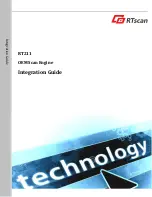
2 2
Troubleshooting and Other Resources
This equipment has been tested and found to comply with the
limits for a Class B digital device, pursuant to Part 15 of the
FCC Rules. These limits are designed to provide reasonable
protection against harmful interference in a residential
installation. This equipment generates, uses and can radiate
radio frequency energy and, if not installed and used in
accordance with the instructions, may cause harmful
interference to radio communications. However, there is no
guarantee that interference will not occur in a particular
installation.
If this equipment does cause harmful interference to radio or
television reception, which can be determined by turning the
equipment off and on, the user is encouraged to try to correct
the interference by one or more of the following measures:
- Reorient or relocate the receiving antenna.
- Increase the separation between the equipment and receiver.
- Connect the equipment into an outlet on a circuit different
from that to which the receiver is connected.
- Consult the dealer or an experienced radio/TV technician for help.
This equipment complies with FCC radiation exposure limits
set forth for an uncontrolled environment. End user must
follow the specific operating instructions for satisfying RF
exposure compliance. This transmitter must not be co-located
or operating in conjunction with any other antenna or
transmitter.
The portable device is designed to meet the requirements for
exposure to radio waves established by the Federal Communi-
cations Commission (USA). These requirements set a SAR
limit of 1.6 W/kg averaged over one gram of tissue.
The highest SAR value reported under this standard during
product certification for use when properly worn on the body
is 1.39 W/kg



































